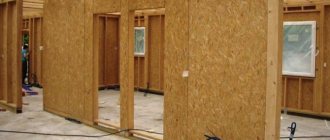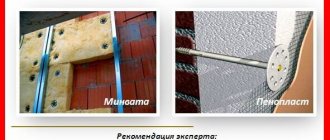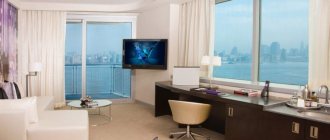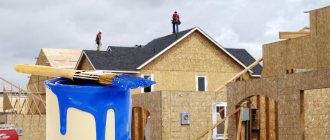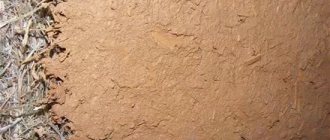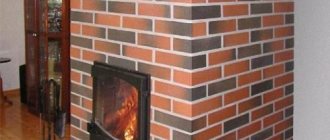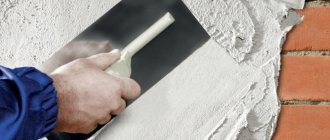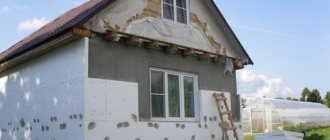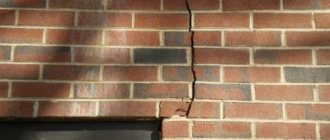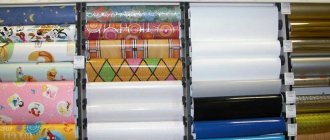Peculiarities
To understand what is the best way to finish walls made of foam blocks inside and outside a room, you first need to understand what this material is and what features it has.
If you do not finish the walls made of foam blocks, this will lead to the following consequences:
- Dirt and dust gradually accumulate in the pores of this material;
- it will absorb moisture from the air and it will get inside during natural precipitation;
- water begins to react with dust and dirt, as a result of which the appearance of such a wall deteriorates, it begins to darken and become covered with uneven spots;
- during freezing, moisture will expand, which leads to damage to the blocks and the formation of cracks.
If you laid the blocks perfectly evenly and processed the seams well, then theoretically, you can leave it that way.
But in this case, your house will not only look unesthetically pleasing, but its service life will also be reduced several times, so it is best to carry out both interior and exterior decoration of the walls from foam blocks.
One of the main features of foam concrete blocks, which ensures their technical characteristics, is the porous structure.
Due to their high porosity, the blocks have low weight and high thermal insulation characteristics.
At the same time, the porous structure of the material reduces its strength and makes its appearance not very attractive, so finishing is required.
The porosity of the material ensures high moisture absorption , which reduces the performance characteristics of foam blocks.
After moisture gets into the blocks and they do not have time to get rid of it before frost, it begins to freeze and damage them, so the interior and exterior decoration must reliably protect the blocks from the negative effects of moisture .
In addition to the fact that such a house must have interior and exterior decoration, it must be equipped with canopies, gutters, window sill drains, a properly constructed roof and protected base.
When creating external and internal decoration of walls from foam blocks, it is necessary to take those materials that will ensure the release of steam from the house to the street, otherwise it will accumulate inside the foam blocks.
Nuances of wall cladding
Processing walls made of foam blocks has its own differences. The smooth surface of the material and its composition do not allow the use of simple cement-sand mortars, which have an insufficient level of adhesion, for cladding. For good adhesion, you will need to first apply primer mixtures that will penetrate the foam concrete, reduce hygroscopicity and increase adhesion.
Wall primer Source chrome-effect.ru
See also: Catalog of companies that specialize in finishing and insulating houses
The quality of the cladding of such material very much depends on compliance with the technology of its installation. If a special adhesive composition was used during the construction of the walls, then the interval between the blocks will be no more than 3 mm, which will create a smooth surface and simplify its further finishing. Also, when laying foam concrete, a reinforcing belt must be used for every 4-5 rows of material. It will ensure good surface strength and prevent possible shrinkage. If reinforcement is not performed, after some time shrinkage can lead to deformation of the blocks and destruction of the inner and outer protective layer.
Important!
The internal cladding of the foam block should be carried out first, only after this the external work is carried out.
Wall treatment should be carried out in dry, warm weather, preferably in summer. This will allow the wall to dry well, which is important for further waterproofing. During the cold season, moisture in the pores may freeze and remain inside the blocks.
Outdoor
Each owner decides for himself how to decorate the walls with foam blocks, taking into account both his preferences and financial capabilities.
Any of the materials used has its pros and cons, so in order to make the right choice, you first need to familiarize yourself with them.
Plaster
One of the simple and inexpensive methods of cladding is plaster, which can be ordinary or decorative.
In order for it to adhere better to the surface of the foam blocks, it is recommended to use a reinforcing mesh or you can treat the surface with a float to open the pores and increase adhesion.
Applying plaster is quite simple, you can do it yourself, it dries quickly and can be combined with other finishing materials.
If the work on its application is carried out in accordance with the developed technologies, then the service life of such a coating will be long.
Fiber cement boards
This is a modern finishing material that protects foam blocks from moisture and increases the thermal insulation characteristics of the house . In addition, such a house looks stylish, beautiful and original.
Ventilated facade
The following materials can be used as a finishing coating when creating a ventilated facade
- siding;
- block house;
- tiles or decorative panels.
To install these materials, a frame is created from metal profiles. In this case, it will be possible to additionally insulate the walls; usually, polystyrene foam or mineral wool are used for this.
The finishing material used to create a ventilated facade can be plastic wood, metal, porcelain stoneware or composite.
When installing a ventilated facade, you don’t have to use insulation, since the foam blocks themselves have high thermal insulation characteristics.
Due to the presence of a gap between the blocks and the facade, air circulates, so moisture does not accumulate, and the likelihood of mold and mildew formation is minimized.
Mounted cassettes
Cassette aluminum structures are usually used for finishing industrial buildings and multi-storey buildings, therefore they are practically not used in private construction.
Sheathing with corrugated sheets
You can use corrugated sheeting, which is available in a wide range, as a finishing coating.
The characteristics of the specified material will depend on the type of its coating, which can be:
- galvanized , the cheapest material, the installation of which is simple and quick;
- polymer , this material has high resistance to natural factors, a large selection of colors and textures;
- profile , it is the most durable and reliable
Vinyl siding
This is a representative of the lightest and cheapest finishing materials, which is also available in a wide range of colors.
This coating is not afraid of moisture, does not fade in the sun, does not rot or rust, has high frost resistance, and is easy and quick to install.
Its disadvantage is low strength and it is afraid of temperature changes.
Before finishing a house, experts recommend creating a 3D project of it, which will allow you to choose the right material, as well as its color and texture.
Block house (facade board)
You can decorate the walls with foam blocks and the specified materials, which can give the house a noble appearance, and it will look like wood.
Before using wooden elements, they must be treated with fire retardants and antiseptics, which can significantly increase the service life of such a facade.
After installation, the wood is coated with primer and varnish, which protect it from the negative effects of external factors.
An alternative to false beams or block houses is wooden lining, which differs from them in thickness and width.
Vapor permeable paint
This method allows you to simply and quickly protect the facade of a house made of foam blocks. A special paint is used, the basis of which is silicone resin, due to which it protects the walls from moisture, the development of fungus and mold.
Under the influence of heat, the paint does not soften, it is sold ready-made and all you have to do is apply it to the walls with a brush or roller. This must be done in at least two layers, the drying time for each of them is about 6 hours.
Brick
When choosing brick as a facing material, it must be taken into account that there must be sufficient width and thickness of the foundation to make brickwork.
In this case, it is also necessary to leave at least 3 cm of gap between the blocks and the brick, which will save the walls from getting wet.
Empty joints are left at the top of the brickwork, through which air can circulate. This type of finishing is durable and looks beautiful, but its cost is high and if you do not have the appropriate skills to install it, you will have to invite specialists.
Stone cladding
To protect the walls from the negative effects of external weather factors, you can finish it with facing natural or artificial stone.
Please note that this material does not increase the heat and sound insulation characteristics of the house . All walls can be covered with stone or it can be combined with other materials, such as plaster.
Natural stone has a high cost, while artificial material is cheaper, lighter, has high frost resistance and resistance to fungal development, is less porous, and in appearance it is almost impossible to distinguish it from natural material.
Drywall
In fact, this popular material is nothing more than dry gypsum plaster in slabs reinforced with cardboard on both sides. Therefore, plasterboard can be considered both as wall panels for installation on lathing, and as large tiles that can be attached to walls using gypsum glue.
Installation on lathing
There are two types of materials for lathing: wooden beams and metal profiles.
Wooden beam
Working with a wooden beam and attaching gypsum boards to it is simple. But it must be dry, and for rooms with high humidity - treated with an antiseptic.
If the walls are smooth, then the timber is attached directly to the foam block.
To level the sheathing on uneven walls in the horizontal and vertical planes, the timber is attached to the foam block using direct hangers for the CD ceiling profile.
The beam layout step is 60 cm. In this case, each standard sheet 1200 mm wide will rest on the sheathing in the center and the edges in the middle of the beam. The most common sheet height is 2500 mm. But if the ceilings are higher than 2.5 m, in order not to “add” the cladding in pieces, you can order gypsum boards with a height of 3000 mm or 4000 mm.
The width of the beam must be at least 60 mm. This is a necessary condition for the location of the screws from the edge of the sheet and the edge of the beam. The thickness of the timber should be sufficient for the self-tapping screw to fit into it without coming out on the other side - 30 or 40 mm.
Profile
For finishing foam blocks with plasterboard, metal profiles CD and UD are often used. The reason is the stable geometry, proven installation technology and nodal connections.
The sheathing installation process looks like this:
- Two parallel lines lying in the plane of the cladding are marked on the ceiling and floor.
- UD profiles are mounted along these lines.
- In accordance with the layout pitch (600 mm), vertical lines are marked on the walls, along which direct hangers are attached for mounting the CD profile. 3-4 hangers per profile are enough for a ceiling height of up to three meters.
- Screw the CD profile to the hangers. Check the level of the sheathing and the distances between adjacent elements. Finally fixed to the guide profiles.
- In places where heavy objects are hung on the walls, embedded elements are installed.
After installing the lathing, they begin to cover the walls with plasterboard.
Often, the advantage of sheathing with plasterboard over sheathing is the possibility of insulating external walls from the inside. Internal insulation is not directly prohibited by regulations, but is not recommended. And as a mandatory condition, there is a requirement for a continuous and reliable vapor barrier layer that protects the insulation from the side of the room. Otherwise, it will get wet and lose its properties, and fungus will appear on the walls. Creating such a layer is extremely difficult. Therefore, this option is not an advantage, but a necessary measure when it is impossible to insulate the walls from the outside.
Glue mounting
If the walls are smooth, then drywall is attached to them using glue. Especially for these purposes, the Knauf company produces Perlfix dry mixture, which must be diluted with water according to the instructions on the package. But before finishing the walls of a house made of foam blocks inside, the surface must be prepared. Standard procedure:
- cleaning walls;
- filling seams and chips with mortar;
- leveling with aerated concrete float;
- applying primer.
The adhesive composition is applied to the sheet using a trowel in “cakes”. One trowel - one serving. Along the perimeter, portions of glue are laid close to each other, retreating a few centimeters from the edge. In the middle of the sheet (along the horizon) another strip is laid out, but already thinned out - with a distance between portions of about 35 cm.
Then the sheet is placed in place, a wooden strip is placed, and by lightly tapping it the sheet is aligned in the plane of the sheathing.
!! The “lifetime” of the prepared solution is no more than 30 minutes. This must be taken into account during the work process. It is useless to dilute dried gypsum glue with water. !!
Finishing drywall
Any finishing of drywall is not complete without “wet” work.
This is natural if the finishing of apartments in houses made of foam blocks is carried out using decorative plaster or tiles. But even for painting or wallpapering, the drywall must be puttied.
Even if the paint has good coverage, surface irregularities and seams may show through two layers of finish. Wallpaper has a different reason. When carrying out cosmetic repairs, they cannot be removed without damaging the cardboard if there is no separating layer of putty.
What to do inside the house
The peculiarity of walls made of foam blocks is that they must first be finished internally, and only then the façade is covered.
It is better to carry out these works in the summer, so that the moisture that gets into the foam concrete can come out.
To waterproof foam blocks, you must use special primers that penetrate the material by 1-5 mm and reliably protect it from moisture.
The inside of a house made of foam blocks can be decorated with more expensive and modern materials.
These can be wall coverings made of wood, bamboo or stone veneer, volumetric options, leather panels.
Modern builders often use glass blocks , from which they make partitions, corners or niches in the house, bar counters or a work area in the kitchen.
This material allows you to create beautiful lighting; you can make decorative panels from it and decorate your bathroom with it.
Interior plaster
After the primer has dried, a fiberglass mesh is mounted ; instead of it, notches can be made on the walls, but while this is easy to do on cut blocks, it is quite difficult on cast ones.
After applying the plaster and drying it, the walls can be painted ; this will be the simplest and cheapest option; acrylic paints or silicone and silicate based compounds are suitable for it.
You can also use wallpaper, preferably paper, non-woven or fabric, which allows air to pass through well.
Drywall
Since foam concrete indoors does not like wet processes, which include plastering, it will be easier and faster to finish the walls inside using plasterboard.
Both plasterboard and gypsum fiber boards are suitable for these purposes. Before installing the sheathing on the walls, they must be sealed and all seams and cracks must be properly sealed.
All that remains is to install the drywall and choose the finish. If you use wallpaper for painting, then you don’t have to putty the walls, but only seal the seams.
If you paint without wallpaper, you will have to putty the walls first.
Advantages of using foam concrete blocks
Foam blocks have gained great popularity in construction due to their undeniable advantages. These include:
- Large block sizes, which can significantly speed up the construction procedure.
- The light weight of the material allows you to reduce the labor intensity of the work and perform it without the use of special construction equipment.
- High mechanical strength of the product.
- Excellent thermal insulation and sound insulation characteristics.
- Protection from various temperatures.
- Non-combustibility of blocks.
- The products are based on environmentally friendly components, so they are completely harmless to the human body.
- Easy finishing using hand tools.
- Walls lined with this material have an excellent level of vapor permeability, which allows them to breathe.
House made of foam blocks inside Source rookame.ru
It is worth considering that the interior decoration of a house made of blocks will require the creation of waterproofing. Since such material has a porous surface, moisture accumulated inside it can lead to loss of thermal insulation qualities. Because of this, the coating may crack, and there is also the possibility of condensation, which also leads to deformation and destruction of the blocks.
Material options for finishing foam blocks
It is possible to veneer a foam block with high quality only by providing good protection from moisture. To do this, before decorative treatment, certain procedures are carried out to level the surface, improve the level of adhesion and protect the blocks.
Application of waterproofing mixture Source my-71.ru
Protective leveling solutions are applied in several layers. The first step is priming with a special mixture, which was developed specifically for foam concrete. You will also need to perform waterproofing to prevent the formation of condensation. It is worth considering that steam appears in all rooms, and not just in the kitchen or bathroom. People also create steam with their breath. A fairly popular vapor barrier is penofol, which is a rolled material based on polyethylene, covered with aluminum foil on both sides.
Further cladding technology depends only on the selected material. What is the best way to decorate the inside of a house made of foam blocks? The following options can be used for this:
- Installation of plasterboard sheets or chipboard with further decorative finishing.
- Plastering surfaces for painting or whitewashing.
- Wallpapering.
- Finishing with clapboard or other wood-based materials.
Installation of drywall sheets
Finishing with plasterboard is a fairly popular solution. This choice will allow the use of a large amount of vapor and heat insulation materials, and will also provide an additional waterproofing layer. The basis of the procedure is covering the surfaces with plasterboard over a pre-prepared sheathing based on wooden beams or a metal profile. The frame is created by fastening vertical components at intervals of 45-55 cm. Additionally, they can be strengthened with horizontal jumpers.
Drywall on foam blocks Source ms.aviarydecor.com
Interior decoration of walls made of foam blocks: options and rules
Increasingly, the material is becoming a major part of modern residential buildings. It is used for several advantages. Foam concrete has a low cost, that is, everyone could afford it. It does not contain environmentally harmful substances. And the foam block weighs a little. But there is also a significant disadvantage: this product quickly absorbs moisture. That is why you cannot do without finishing.
Sometimes a novice builder confuses two materials that seem to have similar technical characteristics: foam block and aerated concrete. There are many differences between them. For example, pay attention to the form of manufacture. In the production of foam blocks, special substances are mainly used, which result in the formation of large cells that are part of the blocks. Compared to aerated concrete, in this instance the cells are much smaller in size. Because of this, the structure turns out to be much denser.
Finishing of foam blocks is carried out using various methods. First of all, pay attention to the following points. Thermal insulation, of course, is of great importance. But no less important is the microclimate created indoors. And this nuance directly depends on the materials you used.
For example, a foam block is the best option if you want to provide not only warmth in the house, but also full air circulation. This material is highly vapor permeable, and this is a positive point. It absorbs moisture, which means it becomes unusable very quickly. This is where the need to grind the blocks arises. Do not forget that you also need an outer protective layer that can prevent various deformations.
Choice of finishes
Wall finishing with penoplex is carried out using various technologies. You can ensure the wear resistance of foam blocks if you take care of high-quality external treatment of the walls. Modern builders prefer the following materials:
- plasterboard structures that you are going to paint in the future; sheets of drywall, which are mounted with adhesive beacons. This coating is recommended
- putty;
- panels made of chipboard, MDF;
- lining made of wood, PVC;
- plaster - later you will either paint this coating or cover it with wallpaper. Another option for finishing foam blocks is decorative plaster;
- ceramic tiles.
Exterior finishing of walls made of foam blocks is often done using plaster. The method is not particularly complicated, but the steps must be performed in the correct sequence. For example, first you will need to apply a deep penetration primer to the walls. It should be used to cover the foam block in two layers. The plastering itself is carried out using special mixtures intended for foam concrete. The best option is to purchase solutions that are made on the basis of gypsum.
Treating the walls with plaster is a good solution for the modern builder. But a significant drawback is worth taking into account: this is not the lowest cost of the material. Not everyone can afford to plaster walls. Therefore, it is worth considering other options. An important nuance is definitely worth remembering: wet finishing of a wall made of foam blocks will not give the desired effect, but will only harm the heat-insulating material.
Among the easy-to-implement and budget-friendly cladding methods, wall covering with plasterboard stands out. Thanks to its use, you can easily hide cables and wires. The whole process begins with priming the surfaces. Don't forget to putty the joints of the drywall sheets. Which type of wall decoration is best to choose depends not only on the cost of materials and your preferences.
Particular attention should be paid to the climatic features of your region. For example, in the southern regions of the country, the use of foam blocks for insulating houses may not be necessary at all, because the winters there are not too harsh. The same cannot be said about temperate climate zones.
